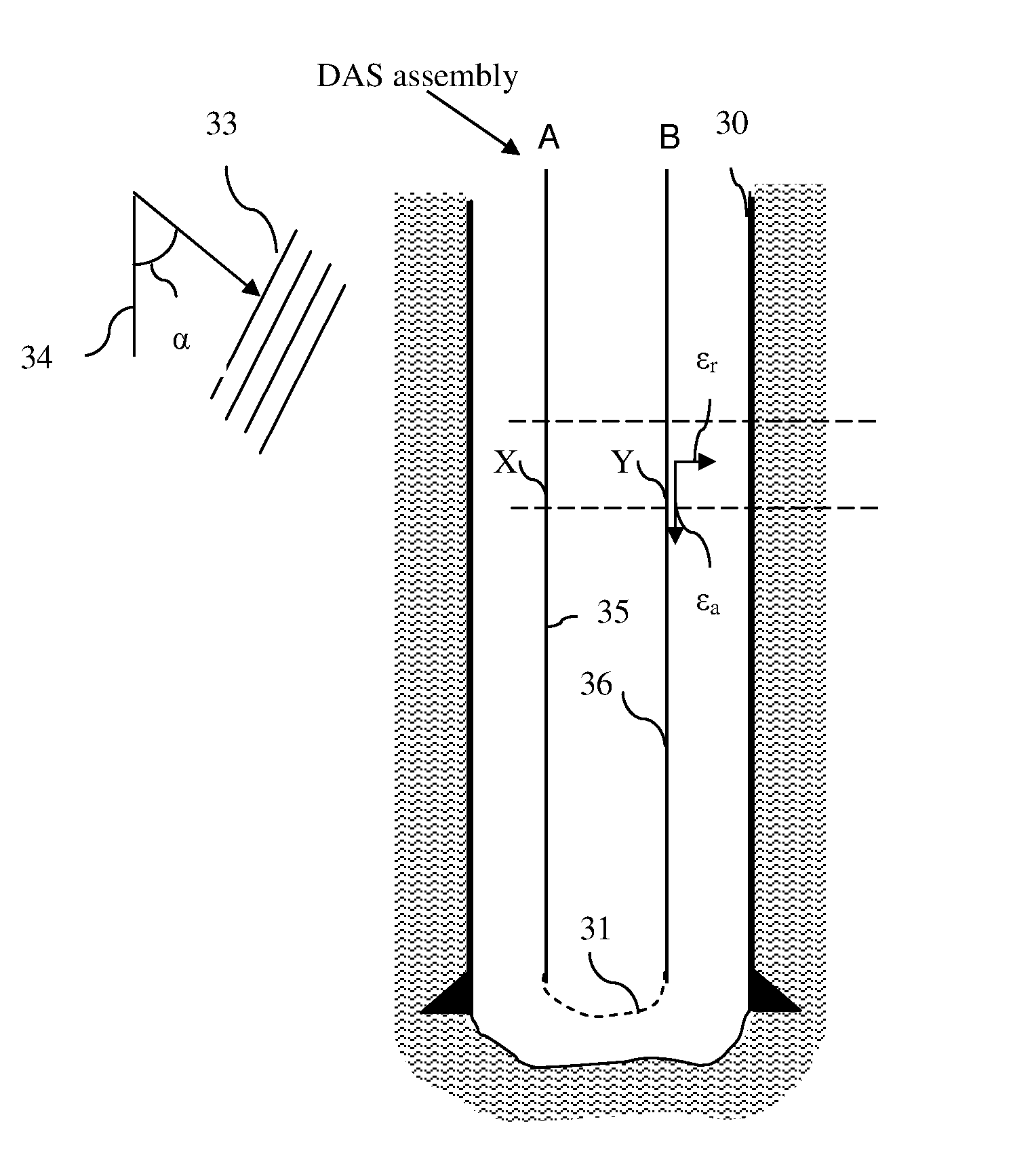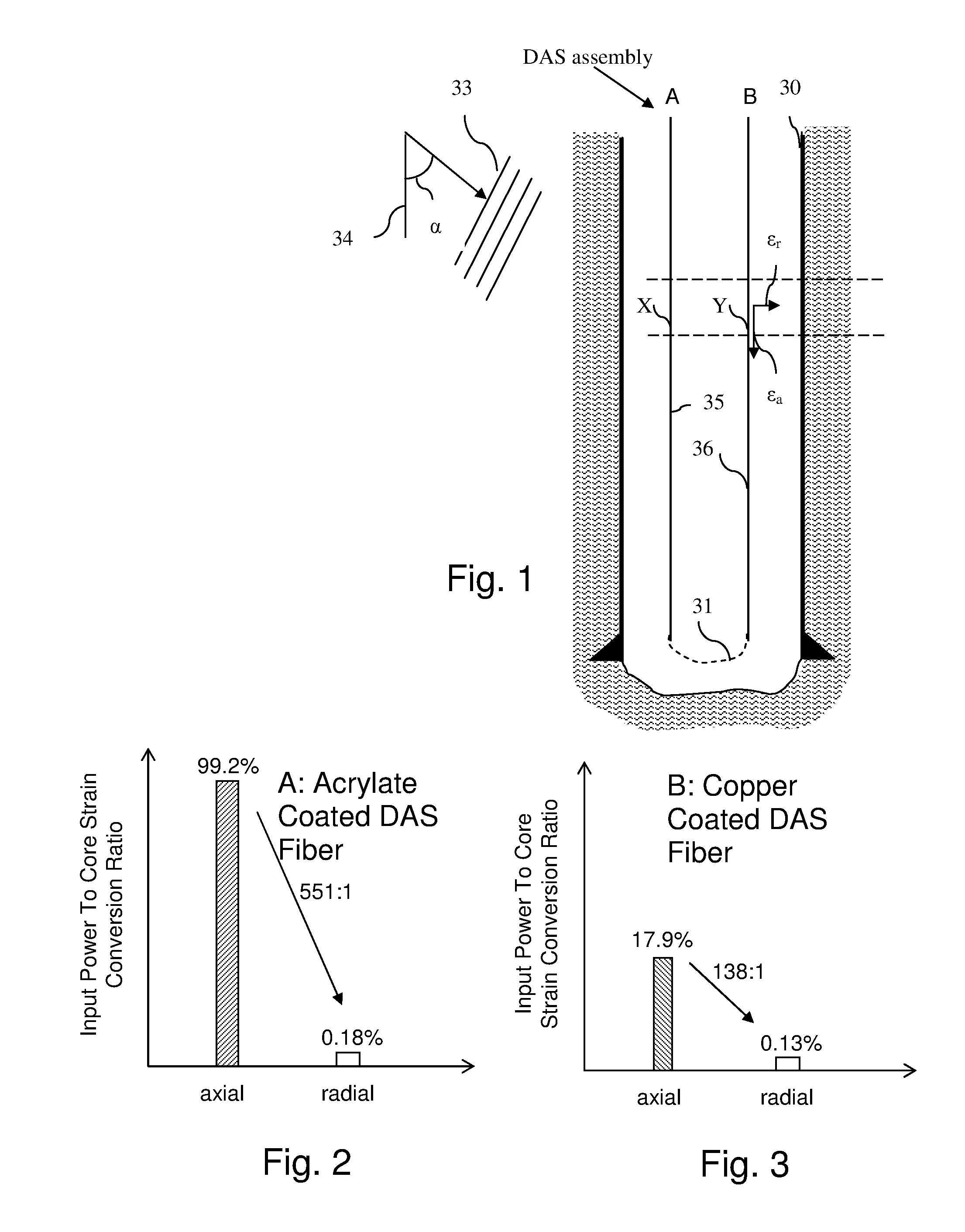Detecting the direction of acoustic signals with a fiber optical distributed acoustic sensing (DAS) assembly
- Summary
- Abstract
- Description
- Claims
- Application Information
AI Technical Summary
Benefits of technology
Problems solved by technology
Method used
Image
Examples
Embodiment Construction
[0018]Although fiber optical DAS cables are better at detecting axial strain, they can detect radial strain as a result of the Poisson effect or strain-optic effect. When radial strain is applied to the fiber, the fiber expands in the axial direction or directly induces a radial strain on the fiber leading to a change in refractive index. The amount of axial strain that is induced by the radial strain is determined by the Poisson ratio, which is a material property of the optical fiber. For most materials, the Poisson's ratio is between 0 and 0.5 (although some exotic materials can have negative values). The amount of refractive index change that is induced by radial strain is determined by the strain-optic coefficients.
[0019]As a result of the magnitude of the various strain transfer effects, seismic data recorded using a DAS system will contain signals resulting primarily from waves that are in line with the fiber and smaller signals resulting from waves that are incident perpendi...
PUM
 Login to View More
Login to View More Abstract
Description
Claims
Application Information
 Login to View More
Login to View More - R&D
- Intellectual Property
- Life Sciences
- Materials
- Tech Scout
- Unparalleled Data Quality
- Higher Quality Content
- 60% Fewer Hallucinations
Browse by: Latest US Patents, China's latest patents, Technical Efficacy Thesaurus, Application Domain, Technology Topic, Popular Technical Reports.
© 2025 PatSnap. All rights reserved.Legal|Privacy policy|Modern Slavery Act Transparency Statement|Sitemap|About US| Contact US: help@patsnap.com



